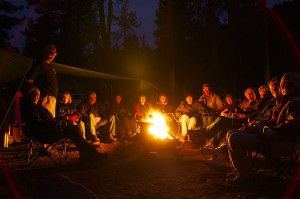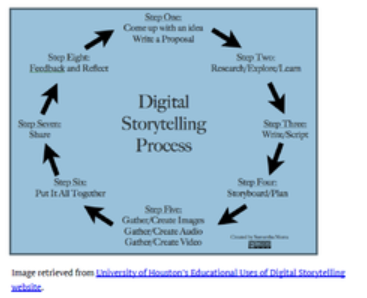Storytelling in the 21st Century
- suem0114
- Oct 25, 2017
- 4 min read
Last time I posted about storytelling, I focused on how students need to be able to verbalise their thoughts and how this needs to be explicitly taught, then practised at every opportunity. I referred to the use of explanations by students as a means of assessment to determine exactly their level of understanding of a concept. Oracy helps to clarify thoughts and it promotes creativity in leading to new ideas as the train of thought progresses.
The very concept of sharing stories creates a two-way learning process. Our students need an authentic audience to impart their new-found knowledge. Our students need to learn how to listen, observe and view with understanding, respect and critical thinking.

Image: https://www.keepingithuman.com/executive-storytelling-leadership-five-keys/
“When we read or hear stories our brain becomes active in the same way it would as if we were actually having the experience we are hearing or reading about in the story” (Speer, Reynolds, Swallow & Zacks, 2009).
I have come across many articles on digital story-telling. I have avoided researching these to date, as I have assumed that connectivity and hardware are not always available and or reliable, especially in the country of my chosen FLS. However, there are so many articles referring to this pedagogy, that I now feel it is a very important aspect of education as a trend. The provision of devices and wifi is always improving.
Alexander and Levine (2008) described how storytelling is changing from the traditional, to the use of 2.0. “open-ended, branching, hyperlinked, cross-media, participatory, exploratory and unpredictable.”
I guess this is the reason the new Australian syllabus added the term viewing. The whole concept of reading and therefore writing has changed. We now have digital literacy and visual literacy in the curriculum.

Mansbach (2016) quotes Robin (2006 ) “Digital stories weave “the art of telling stories with a variety of digital multimedia, such as images, audio, and video.“
So how do we as teachers use Digital Stories for students to view?
As a stimulus for a new topic
As source of deeper learning
As a model for creating their own digital stories
As a learning tool for practising giving feedback i.e. critically analyzing strengths and weaknesses of the story.
How to …Digital Storytelling - Used as a stimulus or source of deeper learning
Students have a basic knowledge
Students view short video
Questions about crucial points
The Seven Elements of Digital Storytelling.
How to …. Digital Storytelling
If we want students to produce a piece of digital storytelling, each of the processes need to be explicitly taught, to maintain a balance between the liminal and post-liminal state. Mishra & Koehler (2006) suggest that digital, storytelling is the convergence of content knowledge, pedagogy knowledge and technology knowledge.

Students need to learn how to research, critically analyzing information and the source. Students need to have adequate keyboard skills and adequate time to grasp a new software. Students need to learn how to give feedback and how to accept feedback. The product itself is the culmination of all that learning. Students may be taught by their peers, a member of the community or guided by the teacher.
For motivation or structuring for learning the skills, I found a sample lesson plan devised by the
For the years 4 -10, it is suggested by Benner & Guhlin that students work in groups of 4.
TELLING THE STORY
Students work together to draft script, by firstly telling the story. This may be taken in turns on a rotation, timed by the teacher. When all have had a turn, first person completes the story. The storyboard is recorded.
Reflective questions asked regarding collaborative process.
WRITING THE STORY
Each group chooses a photo.
Each group member writes their own story start, using the same picture.
When the time to rotate arrives, students save the file then rotate to read, then continue a group member’s story.
Rotation continues until students reach their own story start.
Students read the story and write the ending.
Students work in pairs to “peer edit”.
Students make modifications to their own story based on the discussion.
Images added.
Audio and animations may be added to share as video clips.
This plan helps structure the writing and editing processes, yet relies on students being familiar with technology of their choice and feedback skills. It clearly exemplifies the collaboration process in the oral storytelling part of the lesson, yet each student is expected only to add a portion of the story. The students are clarifying and recording their thoughts on the storyboard and may move on to using more descriptive vocabulary and more complex sentences in their writing drafts. The editing process is given importance as a separate process and the collaboration allows the students to discuss the corrections or modifications giving reasons without embarrassment.
I can’t wait to try this again with this extra insight!
My Digital Story _ Nadine
Some Suggested Tools for Digital Storytelling
Adobe Slate Create stories on the web using magazine style themes and other photo
layouts
Piktochart-Create infographics, reports, and presentations using templates
Visme– Create infographics and presentations
http://www.storycenter.org/
http;//flickr.com/groups/storystarters/
http;// www.storyit.com/Starters/pic/start.htm
www.dictionary.com
www.thesaurus.com





















Comments